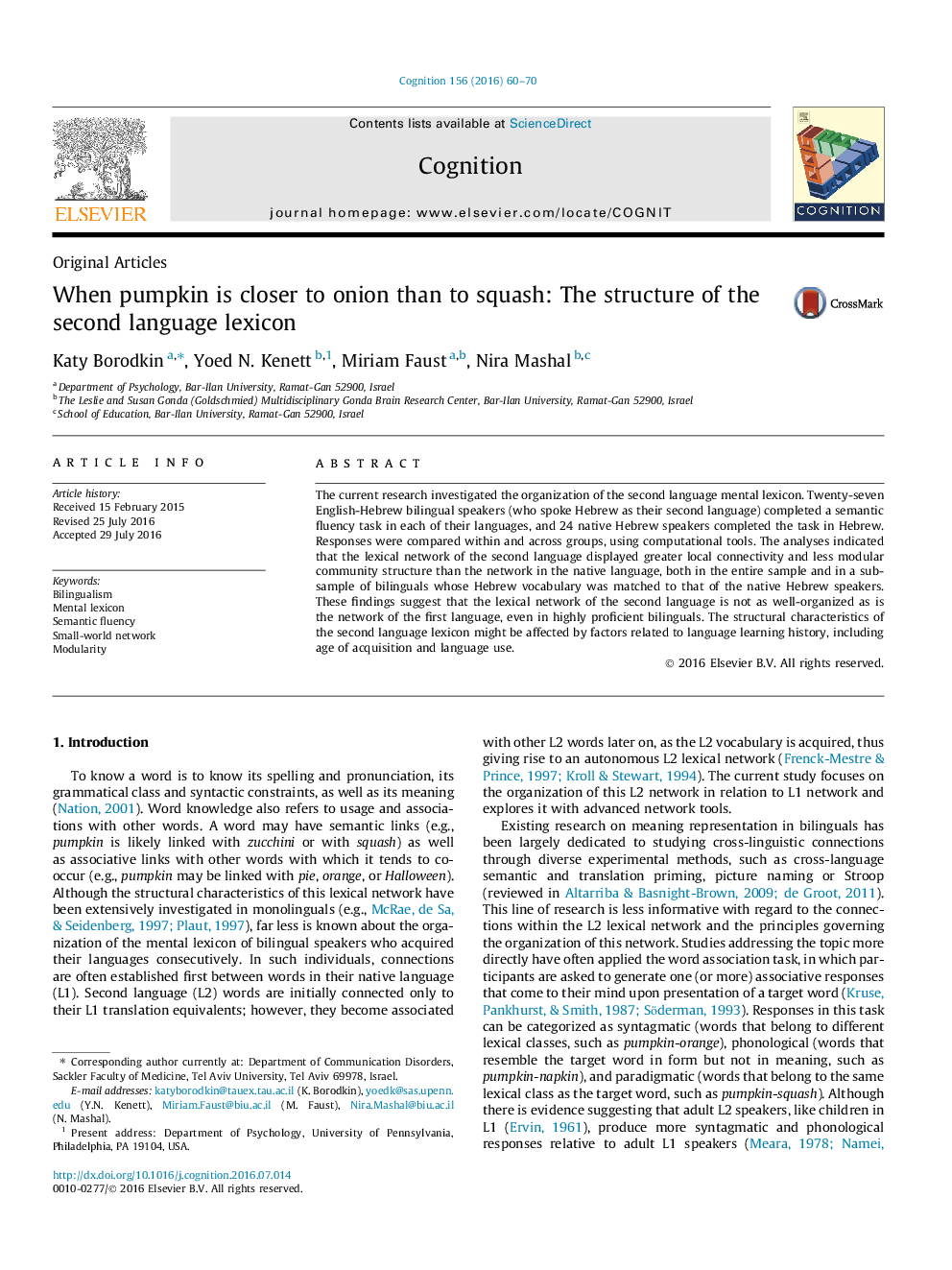| Article ID | Journal | Published Year | Pages | File Type |
|---|---|---|---|---|
| 926316 | Cognition | 2016 | 11 Pages |
•Fewer semantic fluency responses were generated in L2 than L1.•Highly-proficient L2 speakers provided as many responses as L1 speakers.•L1 and L2 differed in lexical organization, even in highly-proficient L2 speakers.•The findings suggest that L2 network is not as well-organized as is L1 network.
The current research investigated the organization of the second language mental lexicon. Twenty-seven English-Hebrew bilingual speakers (who spoke Hebrew as their second language) completed a semantic fluency task in each of their languages, and 24 native Hebrew speakers completed the task in Hebrew. Responses were compared within and across groups, using computational tools. The analyses indicated that the lexical network of the second language displayed greater local connectivity and less modular community structure than the network in the native language, both in the entire sample and in a sub-sample of bilinguals whose Hebrew vocabulary was matched to that of the native Hebrew speakers. These findings suggest that the lexical network of the second language is not as well-organized as is the network of the first language, even in highly proficient bilinguals. The structural characteristics of the second language lexicon might be affected by factors related to language learning history, including age of acquisition and language use.
